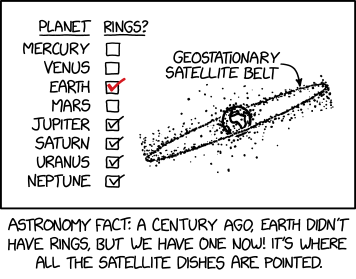this post was submitted on 19 Oct 2025
342 points (98.9% liked)
Comic Strips
19872 readers
2117 users here now
Comic Strips is a community for those who love comic stories.
The rules are simple:
- The post can be a single image, an image gallery, or a link to a specific comic hosted on another site (the author's website, for instance).
- The comic must be a complete story.
- If it is an external link, it must be to a specific story, not to the root of the site.
- You may post comics from others or your own.
- If you are posting a comic of your own, a maximum of one per week is allowed (I know, your comics are great, but this rule helps avoid spam).
- The comic can be in any language, but if it's not in English, OP must include an English translation in the post's 'body' field (note: you don't need to select a specific language when posting a comic).
- Politeness.
- AI-generated comics aren't allowed.
- Adult content is not allowed. This community aims to be fun for people of all ages.
Web of links
- !linuxmemes@lemmy.world: "I use Arch btw"
- !memes@lemmy.world: memes (you don't say!)
founded 2 years ago
MODERATORS
you are viewing a single comment's thread
view the rest of the comments
view the rest of the comments

Probably not, it would still be perturbed over time by those forces (not Lunar tides, though, so perhaps a little more stable).
Orbital dynamics are really a lot more jumbly and chaotic than intuition might suggest, over long timespans. The current arrangement of the solar system only seems stable because it's had billions of years for all the really unstable stuff to get shaken out. Unoccupied regions of space are usually unoccupied because there's some mechanism that disturbs anything that tries to hang around there long-term.
Finding defunct satellites would probably not be too difficult for a civilization at our level. They're small, but they're always nearby so there's plenty of opportunity to catch them in surveys. You probably wouldn't want to use the James Webb, though, for a couple of reasons:
Something like the Simonyi Survey Telescope is better suited to this. It's designed to have a wide field of view so that you can regularly blanket the sky with photographs, then compare the photographs from different times to see if anything's moved relative to the distant stars. Those moving things are likely to be stuff like asteroids and satellites.
Ironically, geostationary satellites would be the hardest type to detect like this since they don't move relative to the distant stars. But since they'll get pushed out of geostationary orbit over time by the perturbations I mentioned, that future civilization will still be able to find them if they're still somewhere nearby.
Sorry, I meant the James webb as a target, not as a telescope to do the survey.
and would a survey by Simonyi be able to detect something so small like the James Webb?
I doubt it, but when it comes to astronomy things have so much precision that I would not be surprised if it was trivial.
Oh, I see. I think James Webb wouldn't be a good target, either. The L2 point isn't stable at all; once James Webb loses station-keeping ability it'll just be a matter of years before it's drifted off and fallen into a generic solar orbit. That'll keep it quite far away from Earth, I doubt it'd be detectable to telescopes with our current technology.
that's what I feared, so "space artefacts" wouldn't be a thing for a future civilization. :(
One story I can't write
No, you're over-generalizing from a special case. The vast majority of the satellites we put up are orbiting close to Earth, the L2 point is only useful for a handful of scientific probes. Same with the L1 point, where Sun-observing satellites get placed.
The satellites orbiting in LEO and MEO will have their orbits decay due to atmospheric friction over the course of thousands or millions of years and will be gone. But HEO and GEO orbits won't have meaningful amounts of atmospheric friction to deal with. Those are the ones that may still be around in a million years. They won't be in the same orbits, though - they're going to be perturbed by the other forces I mentioned. So nothing will really be GEO any more at that point.
Wait long enough and they'll probably all end up scattered, their orbits will become elongated enough that either they'll dip into the atmosphere or get far enough out for the Moon to give them a fling out into solar orbit. But a civilization at our level of capability will probably still be able to find a few of them orbiting Earth after a million years.
They may also be able to find a few things left on the Moon. It'll be hard to spot them against the Lunar surface after a million years, everything will be eroded by micrometeors and covered in dust, but since they've been clued in to the existence of a prior civilization they'll probably look harder for such things earlier on than we would. And if you want to give them a little boost to help things along, it's not inconceivable that something with writing on it could last a million years on Earth if it gets buried in exactly the right way - a page from a children's textbook would have all sorts of important Lunar sites marked on it. I'd look into how various "deep storage" companies around the world use old salt mines as places to store archives of data for customers, your future archaeologists could find one of those and it'd be an absolute jackpot.